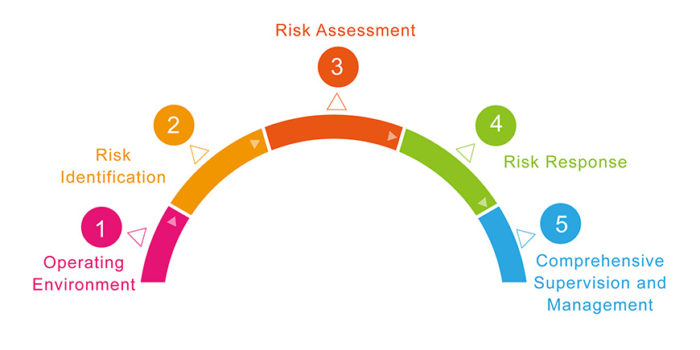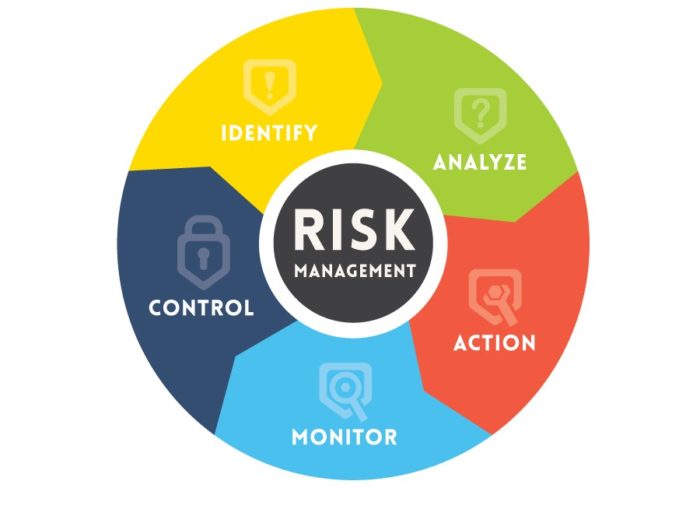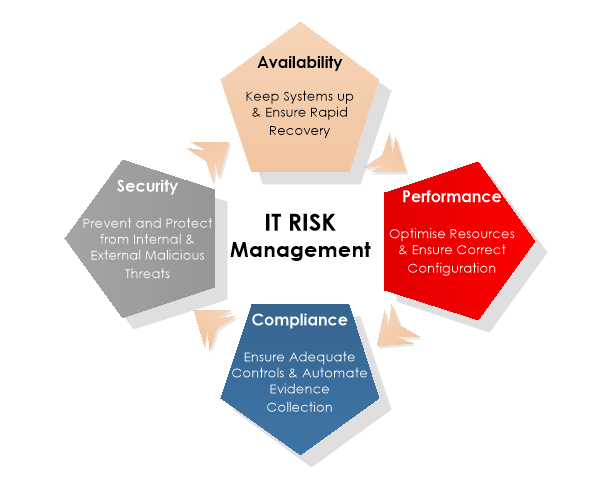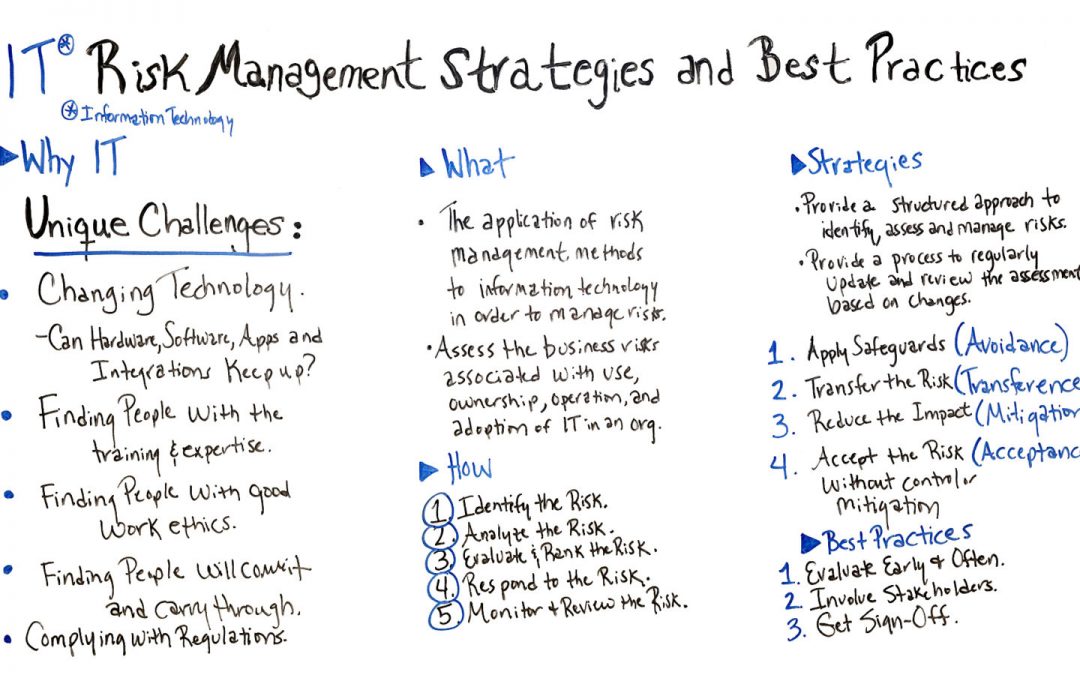Whenever you decide to add something new to your information technology arsenal, you accept some level of risk. For your business to succeed, you first must understand what the chances are and then manage them. These two steps are vital to your business’s success. Let’s take a closer look at how you can manage your IT risks and what your options are.
Table of Contents
Understanding IT Risks

To manage IT risk properly, you must first learn how to understand it.
The delicate dance, known as risk management, can be extremely rewarding when executed properly. Not only can it enable you to be prepared for potential issues, but you can also go a different route if the risks that lie ahead are more than you are comfortable with. After all, it can hardly be considered a solution if adopting a resolution ultimately hurts your productivity or overall success.
This is precisely why risk management is an essential process for any business that wants to be successful.
How Can You Successfully Manage Your IT Risks? Like many business processes, risk management has five steps to follow to achieve a positive outcome:
Predicting IT Risks
It would be best if you saw it coming to prepare for risks properly by committing some time to consider which chances are most likely and when they might occur.
Evaluating Risks
You’ll want to estimate the consequences and likelihood of each risk. Are they potentially catastrophic or minor nuisances?
Arranging Risks

There is a strategy for managing your IT risk that you can find below.
Keeping the impacts of each risk in mind, we now must put them in order by severity. We’ll need to put them in order so that we can address the most critical risks first. We can arrange a strategy to approach them at this point, which we will examine later in more depth.
Reacting
If you’ve made it this far, you are ready to take on any hypothetical risks. If you stick to the plan, you should be fine. There are a few different ways you can approach this:
Avoidance– You can take the necessary steps to avoid the risk, with little consideration of the costs. While applying safeguards is often an effective way to prevent a particular risk, relying on it as your only risk management method is usually resource-intensive.
Reduction – Like the avoidance method above, this method requires using your resources to mitigate risk. However, instead of just eliminating all the risks, this approach makes risks more manageable and less impactful.
Transference – You may have the ability to shift the risk to a different area that can handle it better or finds it less risky. This might be another department in-house, or an MSP, like Infinity DataTel, that is more experienced in handling such matters.
Acceptance – This strategy relies on your foresight to accept that risks are can happen. You don’t want to be caught by surprise when a threat materializes. By following the strategy you’ve mapped out, you’ll be able to handle risks whenever they are presented.
Scrutinize

After you’ve squashed the risk in its tracks, you should do an evaluation. How well you prepared to reduce any impacts? Were your mitigations effective? How can you improve them for next time?
Infinity DataTel Can Help with Your IT Risks
As a managed service provider, we have decades of experience with IT risks and mitigating them. We can help you identify your risks and determine the best ways to address them. Combining the methods described above with our expertise, we’ll find the solution that suits your business’s needs.
Give us a call at 480.493.5999 or send us a message for more information.

